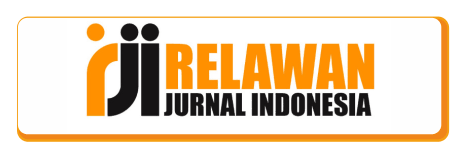Analisis Kepercayaan Diri pada Korban Bullying
 Abstract views: 2183
,
Abstract views: 2183
,
 PDF downloads: 3023
PDF downloads: 3023
Abstract
This research is motivated by the many acts of bullying among teenagers or students, this is due to the lack of teacher supervision of students against bullying so that it will have an impact on students' self-confidence. The purpose of this study was to determine the self-confidence of students who were victims of bullying at SMP Al-Hakim Sampang. Based on this, there are three research focuses that become the reference for this research study, namely: first, what is the description of bullying behavior at Al Hakim Sampang Junior High School? Second, how is the impact of bullying behavior on students' self-confidence at SMP Al Hakim Sampang? Third, have you tried to increase students' self-confidence due to bullying behavior at SMP Al Hakim Sampang?. This study uses qualitative research methods, data collection procedures used by researchers including interviews, observation, documentation. Meanwhile, the data analysis includes data reduction, data presentation, and conclusions. Then in the process of checking the validity of the research data through extended participation, persistence in the observation process, and finally through triangulation. The results of this study indicate that: First, the description of the bullying behavior of class VIII students, namely starting from continuous taunts, causing perpetrators of violence or physical bullying. The results of the questionnaire showed physical bullying behavior of 80 with a percentage of 54% more than other bullying behaviors, then verbal bullying with a score of 43 with a percentage of 29% being the second most bullying behavior, then rational bullying with a score of 16 percentages of 11%, in the last order electronic bullying/ cyber bullying with a score of 9 percentage 6%. Second, the impact of bullying behavior on students' self-confidence. The impact on children's self-confidence varies, such as children who like to be alone, are not enthusiastic about learning, are less active in class, never join other friends, often do not go to school and some even want to quit school. Third, the teacher's efforts to increase students' self-confidence due to bullying behavior at Al Hakim Sampang Junior High School, namely if someone commits bullying behavior, the teacher immediately calls the perpetrator or victim of bullying to handle it, for the victim is given motivation so that his confidence returns again and for the perpetrator is given a reprimand and given punishment according to the violation, so that bullying behavior does not happen again.
Downloads
References
Amri, S. (2018). Pengaruh Kepercayaan Diri Self Confidence Berbasis Ekstrakurikuler Peamuka Terhadap Prestasi Belajar Matematika Siswa. Jurnal Pendidikan Matematika Reflesia Vol 3.
Aristoani, R. (2016). Meningkatkan Kepercayaan Diri Siswa Melalui Layanan Informasi Berbantuan Aodiovisual. Jurnal Konseling Gusjigang Vol 02.
Azwar, W., & Yuli, P. S. (2017). Fenomena Bullying Siswa Siswa Studi Tentang Motif Perilaku Bullying Siswa di SMP Negeri 10 Paiman. Jurnal Pengembangan Masyarakat Islam.
Buna'i. (2006). Metode Penelitian Pendidikan . Pamekasan: STAIN Pamekasan Press.
Bungin, M. B. (2007). Penelitian Kualitatif. Surabaya: Kencana.
Danim, S. (2006). Menjadi Peneliti Kualitatif. Bandung: Pustaka Setia.
Heriansyah. (2018). Guru Adalah Manager Sesungguhnya di Sekolah . Jurnal Managemen Pendidikan Islam Vol 1.
Iwandika. (2020). Fenomena Prokrastinasi Akademik Siswa di Ma Al-Islamiyah 1 Blumbungan Larangan Pamekasan. Skripsi: Univesitas Iain Madura Pamekasan.
Jelita, N. S. (2021). Dampak Bullying Terhadap Kepercayaan Diri Anak. Jurnal Ilmiah Kependidikan Vol 11.
Kundre, R. (2018). Hubungan Bullying Dengan Kepercayaan Diri Pada Remaja di SMP Negeri 10 Manado. E-journal Keperawatan Vol 6.
Kurnia, D. (n.d.). Perilaku Bullying Verbal Pada Peserta Didik Kelas IX SMP LKIA Pontianak. Skripsi: Universitas Fkip Untan Pontianak.
Masdin. (2019). Fenomena Bullying Dalam Pendidikan. Jurnal Al-Ta"lib Vol 6.
Moleong, L. J. (2018). Metode Penelitian Kualitatif Edisi Revisi. Bandung: Remaja Rosdakarya.
Moleong, L. J. (2018). Metode Penelitian Kualitatif Edisi Revisi. Bandung: Remaja Rosdakarya.
Mubarok, M. H. (2016). Hubungan Kepercayaan Diri Dengan Kreativitas Pada Siswa Kelas VIII SMP 10 Malang . Skripsi: Universitas Islam Negeri Maulana Malik Ibrahim Malang.
Muliasari, N. A. (2019). Dampak Perilaku Bullying Terhadap Kesehatan Mental Anak. Skripsi: Universitas Iain Ponorogo.
Murbani, B. (2010). Hubungan Antara Kepercayaan Diri Dengan Perilaku Konsumtif Pada Remaja. Skripsi: Universitas Satana Dharma Yogyakarta.
Prastowo, A. (2014). Metode Penelitian Kualitatif Dalam Perspektif Rancangan Penelitian. Jogjakarta: Ar-Ruzz Media.
Putri, S. O. (2017). Gambaran Perilaku Bullying Pada Mahasiswa UMN Alwashyah. Jurnal Edukasi Vol 3.
Risnawati, S. R., & M, N. G. (2017). Teori-teori Psikologi. Jogjakarta: Ar-Ruzz Media.
Sa'idah, I., Atmoko, A., & Muslihati, M. (2021). Aspirasi Karier Generasi Milenial. Edu Consilium: Jurnal Bimbingan dan Konseling Pendidikan Islam, 2(1), 62-89.
Sa'idah, I. (2019). Teori Dan Teknik Konseling. Pamekasan: IAIN Madura Press
Stefani, G. I. (2020). Dinamika Perkembangan Kepercayaan Diri Korban Bullying. Skripsi: Universitas Satana Dharma Yogyakarta.
Sucipto. (2012). Bullying Dan Upaya Meminimalisasikannya. Jurnal Psikopedagogia Vol 1.
Sugiono. (2016). Metode Penelitian Pendidikan Dan R&D. Bandung: Alfabeta.
Sugiono. (2019). Metode Penelitian Kuantitatif Kualitatif dan R&D. Bandung: Alfabeta.
Thoha, M. (2015). Upaya Menekan Perilaku Fandalisme Siswa di Lembaga Pendidikan Islam. Nuansa Vol 12.
Wiyani, N. A. (2014). Save Our Children From School Bullying. Jogjakarta: Ar-Ruzz Media.
Yuliani, M. (2017). Dampak Perilaku Bullying Pada 2 Siswa. Skripsi: Universitas Satana Dharma Yogyakarta.
Yuyarti. (2018). Mengatasi Bullying Melalui Pendidikan Karakter. Jurnal Kreatif 9.
Zakiyah, E. Z. (2017). Faktor Yang Mempengaruhi Remaja Dalam Melakukan Bullying. Jurnal Penelitian & PPM Vol 4.
The journal operates an Open Access policy under a Creative Commons Non-Commercial 4.0 International license. Authors who publish with this journal agree to the following terms:
- Authors retain copyright and grant the journal right of first publication with the work simultaneously licensed under a
 Commons Attribution-NonCommercial 4.0 International License
Commons Attribution-NonCommercial 4.0 International Licensethat allows others to share — copy and redistribute the material in any medium or format, and adapt — remix, transform, and build upon the material.
- Authors are able to enter into separate, additional contractual arrangements for the non-exclusive distribution of the journal's published version of the work (e.g., post it to an institutional repository or publish it in a book), with an acknowledgement of its initial publication in this journal.
- Authors are permitted and encouraged to post their work online (e.g., in institutional repositories or on their website) prior to and during the submission process, as it can lead to productive exchanges, as well as earlier and greater citation of published work (see The Effect of Open Access).




















